Games
PC Engine Magazine Retrospective
I’ve been going through a massive archive of PC Engine magazines recently. Complete runs of every PCE mag ever printed, basically, 43 gigabytes of scans that brought me on a roller coaster of PC Engine history. The entire history of the PC Engine in Japan in from start to finish. There’s very little missing, and there’s a few things I didn’t know.
I started going through them with anticipation, but the giddy pleasure of exploration pretty quickly gave way to a numbness, and then sadness.
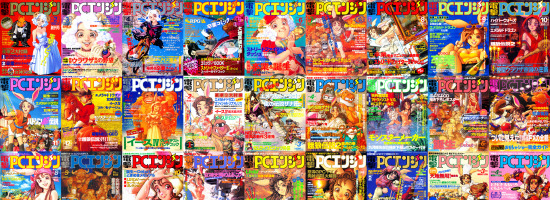
Japanese game magazines are a full-on assault of breathless enthusiasm. If any part of Japanese society is reserved and considered, game mags take the exclamation marks going unused and apply them liberally. On every page you can sense the excitement. Everything’s new! Everything’s amazing!
It starts off with explanations of the system itself and all the launch hardware, of course, but it’s all there: the SuperGrafx, launched surprisingly early in the system’s life span, a mere 2 years after the PC Engine itself. What logic was behind this nearly immediate sequel, only to deliver what must certainly be a record low of only five and a half games?
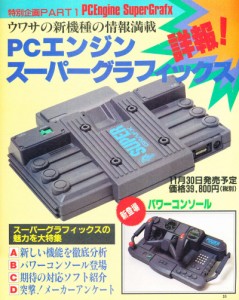
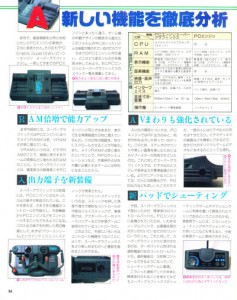
And the PC Shuttle, what the fuck is with that? Selling for 20% less than the CoreGrafx, it was surely more expensive to manufacture as a result of all the new molds and connectors and controller and the single available accessory… But the guts were identical. I’d really like to hear a story explaining this that makes a lick of sense.
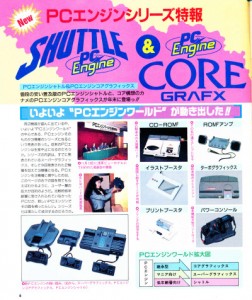
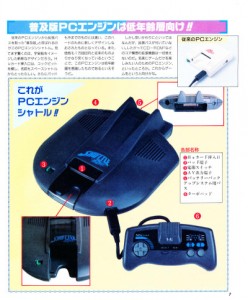
And the hardware just kept coming. The CoreGrafx, a PC Engine with an AV port instead of RF output. The CD ROM module launched early but took years to really hit its stride with the Super System RAM upgrade card, and software worth buying. The CoreGrafx II, the first Duo, the Arcade Card RAM expansion with an astonishing two megabytes RAM. Scattered everywhere were useful, curious and occasionally bewildering accessories, a veritable jungle of neat add-ons that just doesn’t happen with modern consoles. Multi-player adaptors and weird extension modules for weirdly-shaped machines, game-save storage devices that connected to the controller port, and two different portable systems. And finally, the Duo R and RX units, the last in the PC Engine lineage.
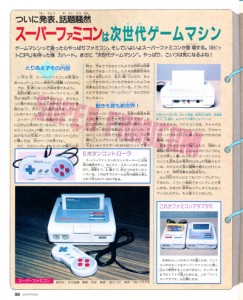
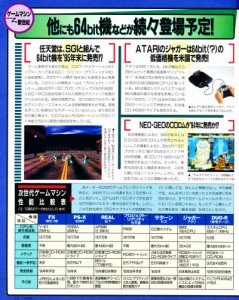
These PC Engine magazines charted the rise of other consoles too. Nintendo’s Super Famicom was big news, and the 3DO made a bizarrely large splash in Japanese magazines. Arcade news was covered with a certain dedication (and many games were later featured as PC Engine ports). One early-1994 issue covered the newest PC Engine Duo, the new PC-FX, the Playstation, 3DO, NeoGeo CD, N64 and the Saturn. And that’s not to mention the new PC Engine accessories like the recently released Arcade Card.
These were mad times.
And there were so many games. The majority were regular releases, but a handful were games that never saw the light of day, like Space Fantasy Zone (which was recently discovered and released by bootleggers) and PC Cocoron, a great looking but ultimately buried sequel to a Famicom game. Strider was shown off, and one magazine made a point of listing every time it had been announced so far. It was a launch title in 1989, a SuperGrafx game, a SuperGrafx and PCE compatible card, a Super CD ROM game, and finally an Arcade Card game in 1994.
But in 1994 two of the four big PCE mags winked out of existence. The remaining two had a slight change in tone in soon after, see if you can spot it:
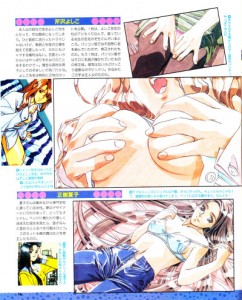
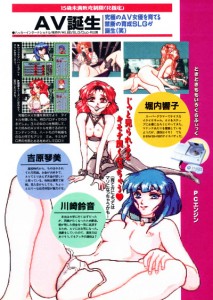
These two magazines stopped printing in 1997. Eight years after the PC Engine was released, three years after the Playstation launched, the last magazines dedicated to an awesome, 16-bit hand-sized console closed up shop. Sure, they had been covering other consoles instead of the PC Engine for a few months, mostly NEC’s follow-up mess, the PC-FX system, but it was still jarring to have it stated so plainly: it’s over.
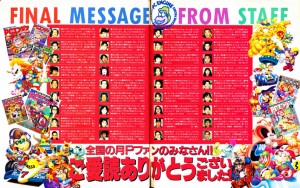
Born of the anything- and everything-goes bubble era, the PC Engine de-throned the Famicom and stormed the whole of Japan. It maintained a solid second place versus the Super Famicom, saw more hardware variations than any other console before or since, had hundreds of games released, and then it whimpered away into nothingness. The ceaseless hype actually ceased, and the PC Engine was no more.
--NFG
[ Jun 2 2014 ]
| Next Post | Navigation | Previous Post |
|---|
Comments
SamIAm
Jun 7 2014
The text above the graph you posted says:
When you look at all the data put together in the graph, the drop in Hucard sales in 1991 stands out. The reason for this drop is not only the release of the Super CD system; the release of 126 games in the previous year also had an influence. Certainly there were good games, but the reality is that this stank of panic selling. We must not forget that these circumstances made users lose faith.
If you’re willing to share these scans, please send me a PM at the PCEFX forums. I would really like to read more of what they say in Japanese. I’m a fast reader, and I can share the most interesting bits with the whole English PCE community.
trev
Aug 19 2014
I suppose it’s a bit “mainstream”, but Devil’s Crush is still one of the best games I’ve ever played. Of course I just spent the last 3 hours numbing my brain on Titanfall waiting for the next CoD release. If these kids only knew they just got pwn3d by someone old enough to be their dad … I digress.
Sombra
Oct 8 2014
Hello! Is there any chance I could get a bigger/better version of that Strider scan? I’m a member of a Strider fan-community and I’d love to translate/share the info found in there! You’ll be properly credited for helping, obviously! Only if you can, don’t want to bother you or something. Regardless, I’m still really thankful for that image, always happy to find more old mag’s coverage on PCE Strider! Thanks!!!
Jose Luis Campaña
Oct 11 2021
Hi!
Are you planning to share all these scans?
NFG
Feb 23 2022
The person I got them from has asked me not to. I’m trying to find a way to share them in a way that benefits the community. I’d like to do a crowd-sourced gallery with annotations and translations, but it’s a project beyond my capabilities.
Name:
Email:
Website:



NFG
Jun 4 2014